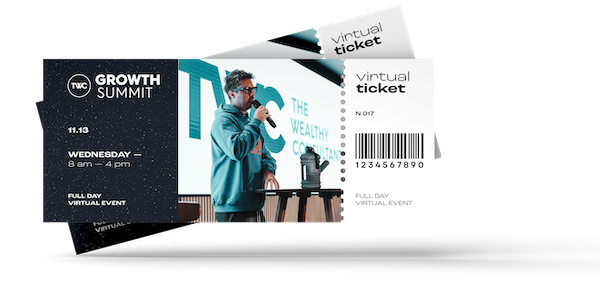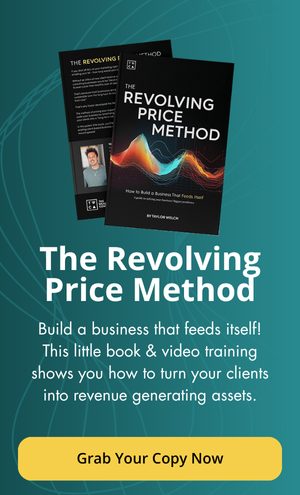Vanity Metrics are a False Flag
Running a business isn’t just about delivering value-packed sessions or writing powerful emails. If you’ve been in the game for a while, you already know this.
Scaling successfully? It’s a numbers game—and no, we’re not talking vanity metrics like top line revenue, EBITDA or social media followers. We’re talking about the hidden indicators that quietly make or break your growth.
There are three unsung heroes of marketing that tell you how efficiently your business is really running. Think of them as your business’s “vital signs.” They reveal where things are working, where dollars might be slipping through the cracks, and where a few adjustments could transform your client acquisition pipeline.
Because guessing is not a growth strategy.
In this post, we’re breaking down each of these metrics, why they matter, and how you can use them to make every marketing dollar work harder. By the end, you’ll be ready to leave guesswork behind and scale with clarity—keeping those high-ticket clients coming without the budget blowout.
Ready to dive in? Here are the three must-watch metrics every serious consultant or coach should know!
Client Acquisition Cost (CAC): Know What It Takes to Get the Right Clients
CAC, or Client Acquisition Cost, gives you a direct insight into what it costs your business to land a high-ticket client. You calculate CAC by dividing your total marketing spend by the number of high-ticket clients acquired in a set time frame. But here’s the trick: smart businesses look at net CAC, not the raw number.
Net CAC = (Total Marketing Spend – Front End Revenue) / Total Clients Produced
This net figure accounts for all the front-end revenue generated from your marketing efforts, which is often a buffer against costs. By focusing on net CAC, you get a more realistic view of what it actually takes to acquire clients who end up buying your high-ticket offer. For instance, if you’re bringing in solid revenue from a front-end offer, it’ll naturally lower your CAC. Tracking CAC (alongside the sales team) keeps everyone aligned on what it takes to convert a lead from interest to investment.
CAC isn’t just about marketing performance; it’s a shared metric between sales and marketing departments, making it a holistic indicator of how well your funnel is converting leads to clients. If you’re seeing a high CAC, it may be time to revisit the quality of your front-end content or nurture strategy. Want to dig deeper into effective marketing strategies? Check out our guide on Effective Marketing: What Matters and What Doesn’t.

Marketing Efficiency Ratio (MER): How Hard is Every Dollar Working?
Your Marketing Efficiency Ratio (MER) is a measure of how effective every dollar you spend is. It’s calculated by dividing your total revenue by total marketing spend. It’s similar to ROAS (Return on Ad Spend), but broader and more comprehensive. Where ROAS might focus on specific ad campaigns, MER provides that big-picture view of all marketing channels.
MER = Total Revenue / Total Marketing Spend
In simple terms, MER tells you how much revenue you’re getting for every dollar you spend on marketing. If your MER is above 1.0, congratulations—you’re making more than you’re spending. Now the REAL WORK of marketing begins – driving it up to 5 and eventually up to 10 and beyond (this is usually only possible if you’re employing a pricing strategy that stacks revenue over time – like our Revolving Price Method).
Below 1.0? It’s time to take a good, hard look at what you’re spending time, money, and energy on in your marketing.
By focusing on MER, you’re getting a straightforward answer to the ultimate question: Is my marketing strategy actually effective?
Want to know more about how to turn that attention into real cash? Here’s a resource on 4 Ways to Turn Marketing Attention Into Money in the Bank.

Days to Close (DTC): Mastering Your Lead Journey
Days to Close (DTC) measures the average time it takes from when a prospect first becomes a lead to when they become a paying client.
Think of DTC as a compass for your middle-funnel marketing. A short DTC means you probably have a killer acquisition funnel on the front… lethal even. A longer DTC means you have a killer ecosystem where leads are being properly nurtured toward an eventual close.
Here is our rule of thumb on this: A healthy average Days to Close should be above 100 days, but below 300 days. Remember this is an AVERAGE, so there will be closes that fall below 100 days, and closes that are well above 300 days. But as long as they average out somewhere between the two, you can rest assured that you are getting a healthy number of closes both from your top of funnel marketing, and from your middle of funnel marketing (pipeline closes).
This is where strategies like audience engagement and attention retention come into play. If you want more insights on this, check out our podcast on Audience Control: How to Engage and Retain Attention.
By tracking CAC, MER, and DTC consistently, you’re equipping yourself to make data-driven decisions that increase profitability, improve efficiency, and reduce guesswork. These metrics don’t just reflect your current performance; they help you proactively optimize and evolve your marketing strategy.

Ready to Put These Into Practice?
Ready to put these insights into action and scale your business to new heights? Join us for the TWC Growth Summit on November 13th! This virtual event is packed with actionable training, including Taylor Welch’s 4-part bulletproof business model. Tickets are just $27, so reserve your spot today and take the first step toward a stronger, more profitable business.

